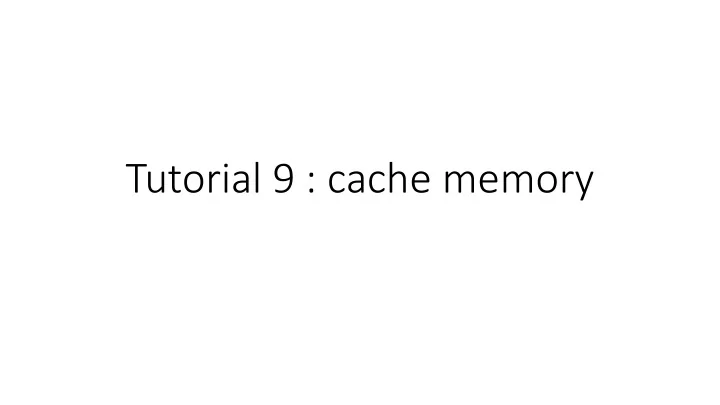

Tutorial 9 : cache memory
Why use a cache ? • Main memory (VRAM/DRAM) is slow ! • To deal with this, the 𝛾 -machine speed is reduced to match the memory read and write speed • To make the machine faster, one can use a intermediate smaller and faster memory between the processor and the main memory: a cache . • The cache associates memory addresses with their values (taken from the main memory)
Basic working principle • Reading a value from memory in presence of a cache is simple: 1. Check whether the cache memory contains the address 2. If it does, read the associated value from the cache 3. Otherwise, save the value in the cache and return it • This usually works because memory accesses are not random. They follow the subsequent principles: • Temporal locality principle • Spatial locality principle
Cache memory variants • Totally associative cache • Totally associative cache in blocks • Direct mapped cache • Set associative cache
Totally associative cache For each memory address A , store its corresponding word . Select a location using a replacement policy . Pros : • Simple Cons : • One comparator and one address per stored word • Does not exploit fully the locality principle • Need for a replacement policy (can be costly to implement)
Associative cache in blocks For each address A , it stores the N consecutive words starting with the one stored at A . 1 2 3 0 Pros : • Exploit the locality principle better • Better capacity: one comparator for N stored words Cons : • Need for a replacement policy which can be costly
Direct mapped cache (in blocks) Uses a part of the (memory) address as cache address ! 0 Pros : 1 Cache addresses • No need for a replacement policy 2 • Only one comparator is needed 3 4 Cons : 5 • Not possible to store simultaneously the content of different memory 6 addresses sharing the same cache 7 address 0 1 2 3
Set associative cache Compromise between associative cache and direct mapped cache N direct mapped caches (in blocks or not). Selection of cache using a replacement policy. Pros : • Can store the content of memory addresses having the same cache address Cons : • Need for a replacement policy but for large enough cache, random selection yields results almost as good as LRU
Recommend
More recommend